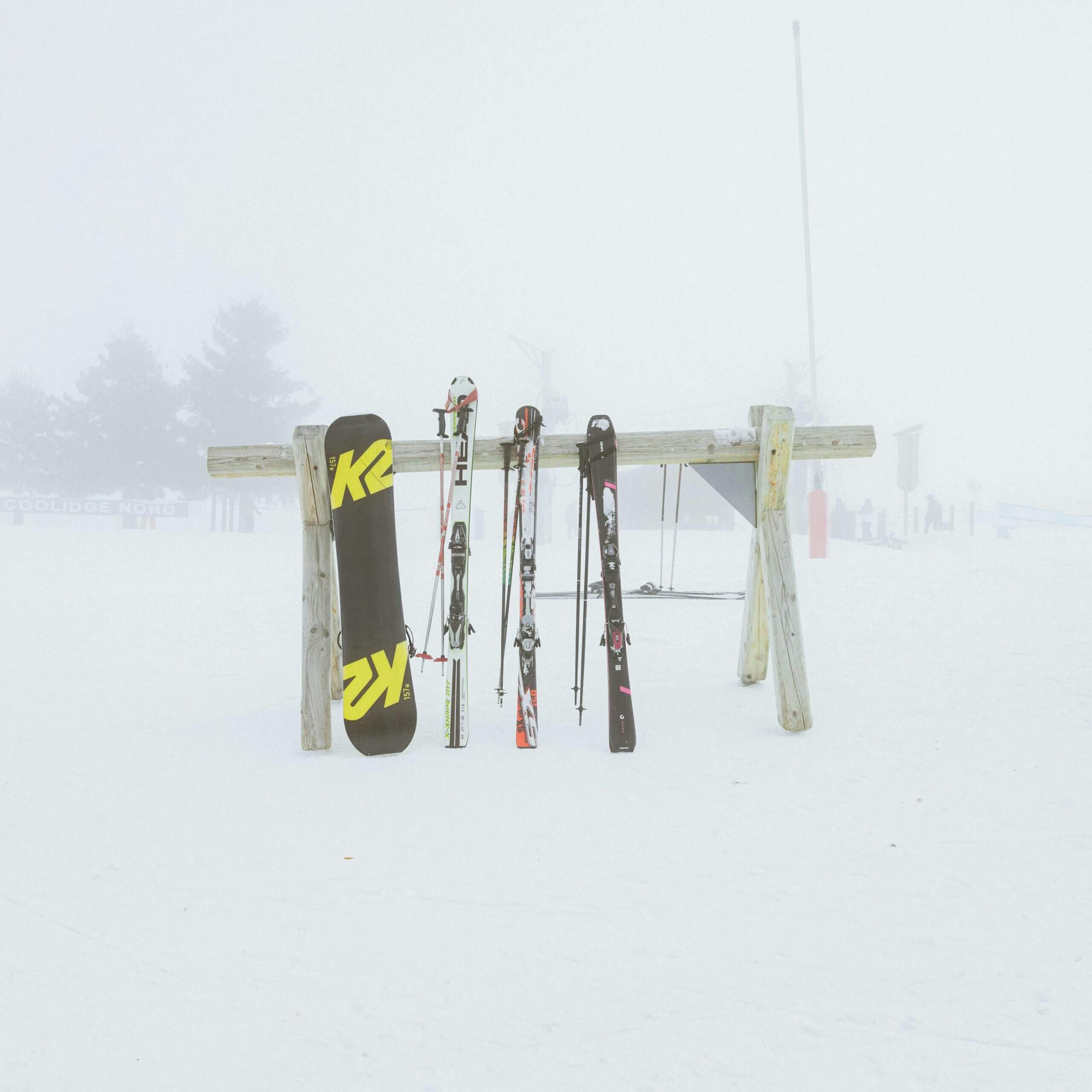Skiing – Conquering the Slopes
Skiing is not just a sport, it’s a thrilling adventure that allows you to conquer the slopes and feel the rush of adrenaline as you glide down the mountain. In this guide, I will share with you important tips and techniques to help you improve your skiing skills, boost your confidence, and make the most out of your time on the snow-covered terrain. From mastering the basic turns to navigating challenging terrains, get ready to take your skiing game to the next level!
Key Takeaways:
- Proper Technique: Learning and mastering the correct skiing techniques is crucial for conquering the slopes safely and effectively.
- Safety First: Prioritizing safety by wearing the appropriate gear, following slope guidelines, and being aware of your surroundings is vital for a successful skiing experience.
- Practice Makes Perfect: Consistent practice and perseverance are key to improving your skiing skills and confidence on the slopes.

Choosing the Right Equipment
A key to a successful skiing experience is having the right equipment. From skis to helmets, each piece plays a crucial role in your performance and safety on the slopes. Here are some tips to help you select the perfect gear for your skiing adventure.
How to Select the Perfect Skis
Selecting the perfect skis depends on your skill level, skiing style, and the type of terrain you plan to conquer. Beginners may opt for shorter skis for easier maneuverability, while advanced skiers might prefer longer skis for stability at higher speeds. Additionally, consider the waist width of the skis for varying snow conditions – wider skis are ideal for powder, while narrower skis are better for groomed slopes.
Tips for Fitting Your Boots
While selecting the right ski boots is crucial for comfort and control on the slopes. When trying on boots, make sure they fit snugly but not too tight, with no painful pressure points. Walk around in them to ensure they provide adequate support and flexion. Any boot fitter can make adjustments for a better fit.
- Choose the right size and flex for your skill level and foot shape.
- Make sure your socks are suitable for skiing to prevent discomfort.
Factors to Consider When Buying a Helmet
Another important piece of equipment to consider is a helmet. Safety should always be a priority when hitting the slopes, and a well-fitted helmet can protect you from head injuries in case of falls or collisions. The helmet should fit comfortably and snugly without any gaps, and it should have proper ventilation to keep you cool during intense runs.
- The helmet should meet safety certification standards to ensure adequate protection.
Consider investing in high-quality equipment that fits you well and suits your skiing style. Your gear can significantly impact your performance and safety on the slopes, so take the time to select the right equipment for an enjoyable skiing experience.
Preparing for the Slopes
How to Get in Shape for Skiing
With the ski season approaching, it’s vital to get in shape to fully enjoy your time on the slopes. I recommend incorporating cardiovascular exercises like running or cycling into your routine to improve endurance. Strength training exercises such as squats and lunges will help build the muscle strength needed for skiing. Remember to also focus on flexibility exercises to prevent injuries and improve your overall performance on the slopes.
Tips for Dressing for the Weather
When preparing for a day of skiing, it’s crucial to dress appropriately for the weather conditions. Layering is key to staying warm and dry on the slopes. Start with a moisture-wicking base layer, add an insulating layer, and finish with a waterproof and breathable outer layer. Don’t forget accessories like gloves, a hat, and goggles to protect yourself from the cold and wind. Knowing how to dress for the weather will ensure you stay comfortable and can fully enjoy your time on the slopes.
- Layering is key
- Choose moisture-wicking fabrics
- Wear waterproof and breathable outerwear
With the ski season approaching, it’s crucial to dress accordingly to the weather conditions on the slopes. Layering is key to staying warm and dry throughout the day. Starting with a moisture-wicking base layer, adding insulating layers, and finishing with a waterproof and breathable outer layer will keep you comfortable and protected. Don’t forget to bring accessories like gloves, hats, and goggles to shield yourself from the elements. Knowing how to dress appropriately for the weather will ensure a pleasant skiing experience.
Factors to Consider When Packing Your Ski Bag
On your skiing trip, packing your ski bag efficiently is vital for a stress-free experience on the slopes. Consider factors such as the duration of your trip, the weather conditions, and the activities you plan to do. Remember to pack vitals like your ski gear, extra layers of clothing, snacks, water, and sunscreen to stay prepared and comfortable throughout the day.
- Pack vitals like ski gear, extra layers, and snacks
- Consider the weather conditions and activities planned
- Don’t forget sunscreen and water
This directly ties into the kind of weather expected on the slopes. Packing your ski bag requires careful consideration of several factors to ensure you have everything you need for a successful day on the mountains. Consider the duration of your trip, the weather forecast, and the activities you plan to engage in on the slopes. This will help you pack efficiently and have a hassle-free skiing experience.
Mastering the Basics
Many beginners may feel intimidated by the idea of skiing, but fear not – mastering the basics is the key to unlocking the thrill of gliding down the slopes with confidence and ease.
How to Stand and Balance on Skis
To stand and balance on skis, I suggest keeping your weight evenly distributed between both skis. Flex your knees slightly and keep your upper body relaxed and facing downhill. Remember to keep your hands in front of you and engage your core muscles to maintain stability. Practice shifting your weight from one ski to the other to get a feel for controlling your direction.
Tips for Turning and Stopping
For turning and stopping, I recommend starting with gentle, gradual movements. To turn, shift your weight towards the direction you want to go while using your edges to carve a smooth arc. For stopping, gradually apply pressure to both skis by leaning back slightly and bringing your skis closer together in a wedge shape. Remember to look ahead and anticipate your movements to navigate the slopes safely.
- Always practice these techniques in a controlled environment before attempting more challenging terrain.
- Remember to stay relaxed and avoid tensing up, as this can hinder your ability to control your skis effectively.
Factors to Consider When Learning to Ski
This sport is not just about physical skills; there are mental aspects to consider as well. To truly excel at skiing, it’s important to take into account factors like fear of speed, confidence levels, and ability to trust your instincts.
- Standing atop a steep slope can be intimidating, but reminding yourself of your training and skills can give you the confidence to conquer it.
- The more you practice and challenge yourself, the better your skiing ability will become over time.
Advanced Techniques
-
How to Tackle Black Diamond Runs
Tip Description Stay Balanced Keep your weight centered to maintain control. Turn Early Start your turns before the slope gets too steep.
Tips for Skiing in Deep Powder
Even though skiing in deep powder can be challenging, it is incredibly rewarding once you get the hang of it. When skiing in deep powder, remember to keep your weight balanced and slightly back to stay on top of the snow. Use wider skis with a rocker design to help you float on the powder easier. Additionally, try to keep your turns fluid and avoid making abrupt movements.
- Choose a narrower stance to help you maintain stability in deep snow.
- Keep your speed up to prevent getting stuck in the powder.
Factors to Consider When Skiing at High Altitudes
The altitude can have a significant impact on your skiing experience. When skiing at high altitudes, be aware of factors like decreased oxygen levels, which can lead to fatigue more quickly. Stay hydrated and take breaks as needed to avoid altitude sickness. Adjust your pace and listen to your body to prevent overexertion.
- Check weather conditions before heading out to ensure safe skiing at high altitudes.
- Be prepared for changes in weather and visibility as altitude increases.
To ensure a successful day on the slopes, it’s crucial to be prepared and knowledgeable about advanced skiing techniques. By mastering these skills and considering the factors unique to high-altitude skiing, you can conquer even the most challenging slopes with confidence.
Safety on the Slopes
After gearing up with the proper equipment, the next crucial aspect of skiing is safety on the slopes. Being aware of potential hazards and skiing with caution are key to an enjoyable and incident-free skiing experience.
How to Identify and Avoid Hazards
Assuming your safety is my top priority, I always make sure to scan the slopes ahead of me and identify any potential hazards, such as icy patches, rocks, trees, or other skiers. By staying alert and being mindful of your surroundings, you can avoid accidents and safely navigate down the mountain.
Tips for Skiing with a Buddy
Assuming you have a skiing buddy, it’s important to establish a plan before hitting the slopes. Communicate clearly and agree on a designated meeting spot in case you get separated. Always keep each other in sight and never ski alone. After all, having a buddy with you adds an extra layer of safety and support.
- Always ski within your buddy’s line of sight.
- Agree on a set of signals to communicate with each other while skiing.
- Regularly check in with each other to ensure both are safe and accounted for.
Factors to Consider When Dealing with Inclement Weather
To ensure a safe skiing experience, it’s crucial to be prepared for changing weather conditions. Always check the weather forecast before hitting the slopes and dress accordingly. Keep in mind factors such as visibility, wind chill, and the condition of the snow when deciding whether to ski in inclement weather.
- Check with the ski patrol or resort staff for any weather advisories or warnings.
- Adjust your skiing plans if the weather conditions deteriorate rapidly.

Staying Safe and Healthy
Not only is skiing a thrilling activity, it also requires attention to safety and health to ensure a successful and enjoyable experience on the slopes. In this chapter, I will share some tips on how to stay safe and healthy while skiing.
How to Prevent Altitude Sickness
Sickness at high altitudes can be a common occurrence for skiers who are not acclimated to the height. To prevent altitude sickness, it is important to stay hydrated, avoid alcohol and caffeine, and gradually increase your altitude over a few days to give your body time to adjust.
Tips for Staying Hydrated on the Slopes
Slopes staying hydrated while skiing is imperative to your overall well-being on the mountain. Dehydration can lead to fatigue, dizziness, and decreased performance. It is recommended to hydrate before hitting the slopes, carry a water bottle with you, and drink consistently throughout the day. Assume that cold weather can also dehydrate you faster than you think.
It’s easy to forget to drink water while skiing, so I suggest packing snacks like fruits or nuts that have high water content to help keep you hydrated throughout the day. Assume that these snacks can also provide you with the necessary energy to keep going on the slopes.
Factors to Consider When Treating Injuries
On the unfortunate occasion of an injury while skiing, it is imperative to know how to address the situation effectively. Knowing basic first aid techniques, having a small medical kit in your backpack, and being aware of the nearest medical facilities are crucial factors to consider.
- Knowing the signs of more serious injuries like concussions or fractures can help you make informed decisions about seeking medical help promptly.
To fully enjoy your skiing experience, it is imperative to be prepared for any potential injuries that may occur on the slopes. Knowing the proper procedures for assessing and treating injuries can make a significant difference in your safety and well-being while skiing.
- Knowing when to seek professional medical help is crucial in preventing further complications and ensuring a speedy recovery.
Conclusion
To wrap up, I hope this guide on conquering the slopes while skiing has been helpful for you. Do not forget, skiing is a thrilling sport that can be enjoyed by people of all ages and skill levels, as long as you approach it with the right mindset and preparation. By mastering the basics, choosing the right gear, maintaining good form, and practicing regularly, you can improve your skills on the slopes and have an amazing skiing experience.
So next time you hit the mountains, don’t be afraid to push yourself to try new runs and techniques. With determination and practice, you can become a confident and skilled skier, conquering even the most challenging slopes with ease. Enjoy the fresh mountain air, breathtaking views, and the rush of adrenaline as you glide down the mountainside!
FAQ
Q: What gear do I need for skiing?
A: You will need skis, boots, poles, appropriate clothing (waterproof jacket and pants, gloves, goggles, and a helmet), and sunscreen.
Q: How do I improve my skiing technique?
A: To improve your skiing technique, consider taking lessons from a professional instructor, practice regularly, focus on proper body positioning and balance, and challenge yourself with more difficult terrain as you progress.
Q: What safety precautions should I take while skiing?
A: Always wear a helmet, ski in control, be aware of your surroundings and other skiers, obey all posted signs and warnings, stay within your limits, and carry a charged cell phone in case of emergencies.







